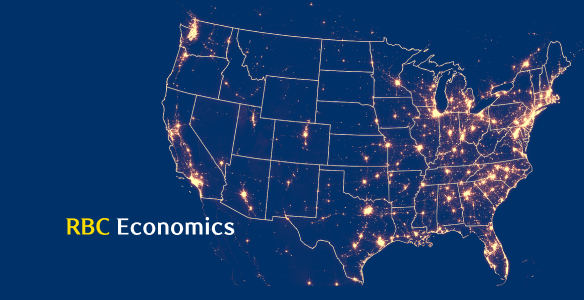
Demand for travel in the U.S. among Canadians has seen a plunge in early 2025. That means fewer services exports for the U.S. and potentially a larger net U.S. trade deficit.

Less Canadian travel abroad could mean more spending closer to home, potentially boosting Canadian tourism demand and other discretionary purchases this year.
The travel season is looking different for many Canadians – instead of going to the U.S., more are opting for domestic or other international destinations this year.
The “buy Canadian” movement, sparked by consumers’ discontent with disruptive U.S. trade policies showed up in early travel data from Statistics Canada, which points to a persistent decline in the number of Canadians returning from the U.S. in 2025.
April saw the steepest drop with number of Canadians flying back from the U.S. falling 20% year-over-year, while land travel from the U.S. slumped by an even larger 26%.
The timing of the Easter holiday may have distorted the data, but it would have masked an even larger decline in April. The annual comparison for April could have been propped up by the Easter long weekend falling in April this year as opposed to the end of March in 2024.
Falling travel to the U.S. doesn’t mean Canadians have stopped going abroad altogether—they’ve simply chosen other destinations.
In April, 143,000 fewer Canadians flew back from the U.S., but 114,000 more—a 10% increase—returned from other countries.
Slow U.S. travel demand could grow U.S. trade deficit
The decline in U.S. travel isn’t unique to Canada. Arrivals to the U.S. from countries other than Canada and Mexico fell from a 5% increase in January to a 1.6% decline over March and April. Most of that drop come from fewer Asian and Western European visitors.
International travel spending falls under the services trade. When foreigners travel and spend in the U.S., those expenditures become services exports. Expenditures from Americans travelling and spending abroad is then considered services imports.
Lower demand for travel to the U.S. means less travel dollar collected. That will shrink total U.S. exports and slow gross domestic product growth (if there aren’t major changes in Americans travelling abroad). But, the impact will be marginal since tourism accounts for a relatively small share of the U.S. economy.
More significantly, it will widen the overall trade deficit—the opposite of what the current U.S. administration is trying to achieve through import tariffs.
Potential upsides for Canadian tourism this year
More Canadian staying closer to home is usually positive for the domestic tourism industry.
On average, Canadians spend more in the U.S. than Americans spend in Canada. The spending saved from trips to the U.S. could be spent on traveling to other parts of the world or within Canada. It could also be spent on other domestic discretionary items such as food, events and retail.
Indeed, as we noted during the pandemic when international borders closed, when it comes to tourism within Canada, it’s Canadians that matter most. In 2024, domestic travel generated more than three-quarters of total tourism demand in the country.
The tourism sector could be one of the few silver linings In the Canadian economy, amid a global trade war. However, slower population growth and a softening labour market could pose headwinds.
In Canada, we expect trade disruptions will continue to hinder job growth, pushing the unemployment rate higher. That could mean slower income growth and less purchasing power among Canadian households, and potentially softer travel demand.
This article is intended as general information only and is not to be relied upon as constituting legal, financial or other professional advice. The reader is solely liable for any use of the information contained in this document and Royal Bank of Canada (“RBC”) nor any of its affiliates nor any of their respective directors, officers, employees or agents shall be held responsible for any direct or indirect damages arising from the use of this document by the reader. A professional advisor should be consulted regarding your specific situation. Information presented is believed to be factual and up-to-date but we do not guarantee its accuracy and it should not be regarded as a complete analysis of the subjects discussed. All expressions of opinion reflect the judgment of the authors as of the date of publication and are subject to change. No endorsement of any third parties or their advice, opinions, information, products or services is expressly given or implied by Royal Bank of Canada or any of its affiliates.
This document may contain forward-looking statements within the meaning of certain securities laws, which are subject to RBC’s caution regarding forward-looking statements. ESG (including climate) metrics, data and other information contained on this website are or may be based on assumptions, estimates and judgements. For cautionary statements relating to the information on this website, refer to the “Caution regarding forward-looking statements” and the “Important notice regarding this document” sections in our latest climate report or sustainability report, available at: https://www.rbc.com/our-impact/sustainability-reporting/index.html. Except as required by law, none of RBC nor any of its affiliates undertake to update any information in this document.


